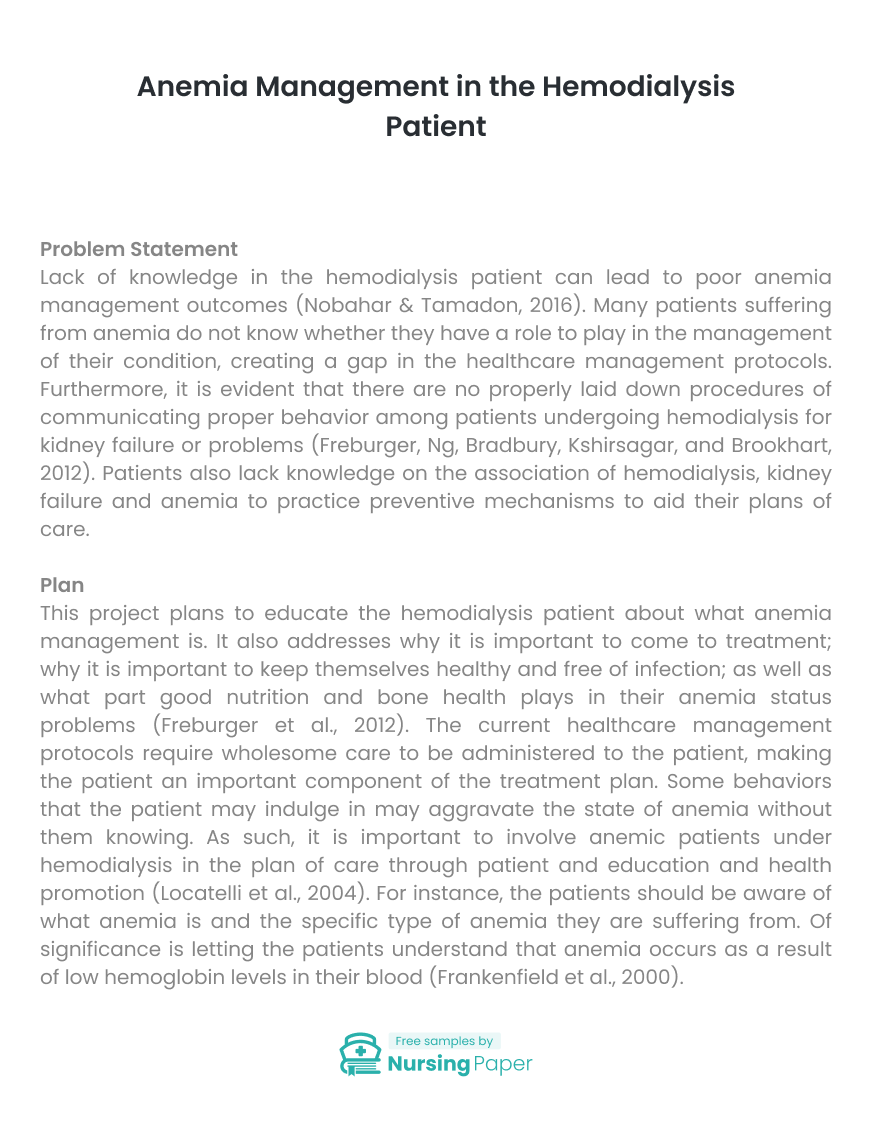1. Coladonato, J. A., Frankenfield, D. L., Reddan, D. N., Klassen, P. S., Szczech, L. A., Johnson, C. A., & Owen, W. F. (2002). Trends in anemia management among US hemodialysis patients. Journal of the American Society of Nephrology, 13(5), 1288-1295.
2. Frankenfield, D., Johnson, C. A., Wish, J. B., Rocco, M. V., Madore, F., & Owen, W. F. (2000). Anemia management of adult hemodialysis patients in the US: Results from the 1997 ESRD Core Indicators Project. Kidney international, 57(2), 578-589.
3. Freburger, J. K., Ng, L. J., Bradbury, B. D., Kshirsagar, A. V., & Brookhart, M. A. (2012). Changing patterns of anemia management in US hemodialysis patients. The American journal of medicine, 125(9), 906-914.
4. Locatelli, F., Pisoni, R. L., Akizawa, T., Cruz, J. M., DeOreo, P. B., Lameire, N. H., & Held, P. J. (2004). Anemia management for hemodialysis patients: kidney disease outcomes quality initiative (K/DOQI) guidelines and dialysis outcomes and practice patterns study (DOPPS) findings. American Journal of Kidney Diseases, 44, 27-33.
5. Nobahar, M., & Tamadon, M. R. (2016). Barriers to and facilitators of care for hemodialysis patients; a qualitative study. Journal of renal injury prevention, 5(1), 39.
6. Silverberg, D. S., Wexler, D., Blum, M., Keren, G., Sheps, D., Leibovitch, E., … & Shapira, I. (2000). The use of subcutaneous erythropoietin and intravenous iron for the treatment of the anemia of severe, resistant congestive heart failure improves cardiac and renal function and functional cardiac class, and markedly reduces hospitalizations. Journal of the American College of Cardiology, 35(7), 1737-1744.

The download will start shortly.



 Subject:
Subject:
 Number of pages: 9
Number of pages: 9